
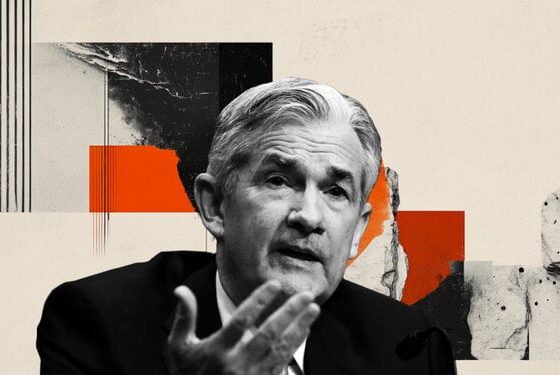
others
Powell speaks on policy outlook after holding policy rate unchanged – Crypto News
Federal Reserve Chairman Jerome Powell explained the decision to leave the policy rate unchanged at the range of 4.25%-4.50% after the March meeting and responded to questions in the post-meeting press conference.
Follow our live coverage of the Fed monetary policy announcements and the market reaction.
Highlights of the Fed’s press conference
Economy is strong.
Labor market conditions solid.
Inflation remains somewhat elevated.
Fed made technical decision to slow pace of decline in balance sheet.
Recent indications point to moderation in consumer spending.
Surveys show heightened uncertainty.
Remains to be seen how uncertainty will affect outlook.
Unemployment rate in narrow range for last year.
Labor market conditions broadly in balance.
Labor market not a source of inflationary pressures.
PCE prices likely rose 2.5% in December.
Core PCE prices probably rose 2.8%.
Inflation expectations have recently moved up, with tariffs as driving factor.
Longer-term inflation expectations consistent with 2% goal.
New administration is implementing significant policy changes, net effect is what will matter.
Uncertainty around policy changes and economic effect is high.
Focused on separating signal from noise.
We do not need to be in a hurry.
We will await further clarity.
Do not need to be in a hurry, well positioned to wait for better clarity.
Uncertainty today is unusually elevated.
Uncertainty is unusually elevated, policy is not on a preset course.
If economy remains strong, we can maintain policy restraint for longer.
If labor market weakens, we can ease if needed.
Have seen some signs of increased tightness in money markets.
Base case is that there is no policy signal from tariffs, but can’t know that.
Too soon to say it it will be appropriate to look through effect of tariff inflation.
Goods inflation moved up, trying to track that back to tariff increasing is challenging.
Overall labour market is in balance.
Policy can move in the direction we need to.
We were getting closer to price stability.
If an inflationary impulse will go away on its own, it’s not the right thing to tighten policy.
For now, hard data is solid; it’s a good time to wait for further clarity before adjusting policy.
We will know in a couple of months if higher goods inflation in first two months of the year was from tariffs.
Housing services inflation has been behaving well, moving down in a good way.
Drop in sentiment is partly to do with big changes by administration on policy.
Some of flatlinning in Fed projections for core inflation this year is from tariffs.
Tariffs tend to bring growth down and inflation up.
We are not going to be in any hurry to move on rate cuts.
Policymakers widely raised their estimates of the risks to Fed goals.
I don’t see a reason to think we are looking at a replay of the 70s.
This section below was published at 18:00 GMT to cover the Federal Reserve’s policy decisions and the immediate market reaction.
The United States (US) Federal Reserve (Fed) announced on Wednesday that it left the policy rate, federal funds rate, unchanged at the range of 4.25%-4.5% following the March meeting. This decision came in line with the market expectation.
In the policy statement, the Fed noted that the economy continues to expand at a solid pace and reiterated that inflation remains “somewhat elevated.”
Key takeaways from Fed policy statement
“Unemployment rate has stabilized at low level and labor market conditions remain solid.”
“Committee is attentive to risks to both sides of its dual mandate, statement no longer says risks are roughly balanced.”
“Monthly treasury redemption cap will decline to $5 billion from $25 billion; monthly redemption cap on mortgage-backed securities is unchanged at $35 billion.”
“Fed vote on policy included one dissent from governor Waller, who supported no change on policy rate but preferred no change to balance sheet runoff.”
Alongside the policy statement, the Fed also published the revised Summary of Economic Projections (SEP), with key highlights listed below.
“Fed officials’ median view of fed funds rate at end-2025 3.9% (prev 3.9%).”
“Fed officials’ median view of fed funds rate at end-2026 3.4% (prev 3.4%).”
“Fed officials’ median view of fed funds rate at end-2027 3.1% (prev 3.1%).”
“Fed officials’ median view of fed funds rate in longer run 3.0% (prev 3.0%).”
“Fed projections imply 50 bps of rate cuts in 2025, 50 bps more in 2026.”
“Fed projections show 4 of 19 officials see no cuts in 2025, 4 see one cut, 9 see 2 cuts, 2 see 3 cuts.”
“Fed projections see economic growth slowing in 2025 and inflation remaining further above 2% target.”
“Fed policymakers see end-2025 PCE inflation at 2.7% versus 2.5% in December; core seen at 2.8% versus 2.5%.”
“Fed policymakers see 1.7% GDP growth in 2025 versus 2.1% in December, see longer-run growth at 1.8% vs 1.8% in December.”
“Fed policymakers see 4.4% unemployment rate at end of 2025 versus 4.3% in December projections.”
Market reaction to Fed policy decisions
The US Dollar Index retreated from session highs with the immediate reaction and was last seen rising 0.4% on the day at 103.65.
US Dollar PRICE Today
The table below shows the percentage change of US Dollar (USD) against listed major currencies today. US Dollar was the strongest against the New Zealand Dollar.
| USD | EUR | GBP | JPY | CAD | AUD | NZD | CHF | |
|---|---|---|---|---|---|---|---|---|
| USD | 0.51% | 0.18% | 0.19% | 0.26% | 0.42% | 0.55% | 0.28% | |
| EUR | -0.51% | -0.33% | -0.33% | -0.25% | -0.08% | 0.04% | -0.23% | |
| GBP | -0.18% | 0.33% | 0.04% | 0.08% | 0.26% | 0.37% | 0.08% | |
| JPY | -0.19% | 0.33% | -0.04% | 0.03% | 0.22% | 0.32% | 0.05% | |
| CAD | -0.26% | 0.25% | -0.08% | -0.03% | 0.18% | 0.31% | 0.00% | |
| AUD | -0.42% | 0.08% | -0.26% | -0.22% | -0.18% | 0.11% | -0.13% | |
| NZD | -0.55% | -0.04% | -0.37% | -0.32% | -0.31% | -0.11% | -0.28% | |
| CHF | -0.28% | 0.23% | -0.08% | -0.05% | -0.00% | 0.13% | 0.28% |
The heat map shows percentage changes of major currencies against each other. The base currency is picked from the left column, while the quote currency is picked from the top row. For example, if you pick the US Dollar from the left column and move along the horizontal line to the Japanese Yen, the percentage change displayed in the box will represent USD (base)/JPY (quote).
This section below was published as a preview of the Federal Reserve’s monetary policy announcements at 10:00 GMT.
- The Federal Reserve is expected to leave the policy rate unchanged for the second consecutive meeting.
- The revised Summary of Economic Projections could offer key clues about the policy outlook.
- The US Dollar could recover if the Fed downplays growth concerns.
The United States (US) Federal Reserve (Fed) will announce monetary policy decisions and publish the revised Summary of Economic Projections (SEP), the so-called dot plot, following the March policy meeting on Wednesday. Market participants widely anticipate the US central bank to leave policy settings unchanged for the second consecutive meeting, after cutting the interest rate by 25 basis points (bps) to the 4.25%-4.5% range in December.
The CME FedWatch Tool shows that investors virtually see no chance of a rate cut in March while pricing in about a 30% probability of a 25 bps reduction in May. Hence, revised forecasts and comments from Fed Chairman Jerome Powell could drive the US Dollar’s (USD) valuation rather than the interest rate decision itself.
In December, the dot plot showed that policymakers were projecting a total of 50 bps reduction in the policy rate in 2025, while forecasting an annual Gross Domestic Product (GDP) growth of 2.1% and seeing an annual Personal Consumption Expenditures (PCE) inflation of 2.5% at year-end.
“The FOMC is broadly expected to keep its police stance unchanged for a second consecutive meeting,” said TD Securities analysts previewing the Fed event. “Based on the still steady signal provided by the labor market amid still sticky inflation, we expect Chair Powell to double-down on his message of patience regarding policy decisions. We also do not anticipate significant changes to the Fed’s SEP or to QT plans for now,” they added.
When will the Fed announce its interest rate decision and how could it affect EUR/USD?
The US Federal Reserve is scheduled to announce its interest rate decision and publish the monetary policy statement with the revised SEP on Wednesday at 18:00 GMT. This will be followed by Fed Chairman Jerome Powell’s press conference starting at 18:30 GMT.
Disappointing macroeconomic data releases from the US, combined with US President Donald Trump’s tariff announcements, revived fears over the US economy tipping into recession. According to the Federal Reserve Bank of Atlanta’s GDPNow model, the US economy is projected to contract at an annual rate of 2.4% in the first quarter.
In case the dot plot shows a rate cut projection of 75 bps in 2025, this could be seen as a dovish shift in the rate outlook and trigger another leg of the USD selloff. On the flip side, a hawkish revision in the SEP, with officials forecasting a single 25 bps cut, could boost the currency.
If the interest rate projection remains unchanged, investors will scrutinize inflation and growth forecasts. A downward revision to growth expectations could hurt the USD, while an upward revision to inflation forecasts, without a noticeable change in the GDP estimates, could support the USD in the near term.
Powell’s comments could also impact the USD’s performance. If he downplays concerns over an economic downturn and puts more emphasis on the uncertainty surrounding the inflation outlook, citing Trump’s administration’s tariffs, the USD is likely to outperform its rivals in the near term. On the contrary, if Powell acknowledges signs of a worsening growth outlook, the USD is likely to have a difficult time finding demand.
Eren Sengezer, European Session Lead Analyst at FXStreet, provides a short-term technical outlook for EUR/USD:
“EUR/USD remains technically bullish in the near term as it stays in the upper half of the two-month-old ascending regression channel. Additionally, the Relative Strength Index (RSI) indicator on the daily chart holds near 70, reaffirming the bullish stance.”
“On the upside, 1.1000 (upper limit of the ascending channel, round level) aligns as a key resistance level before 1.1100 (static level, round level) and 1.1180 (static level from October 2024). Looking south, the first support level could be spotted at 1.0770 (mid-point of the ascending channel) before 1.0720, where the 200-day Simple Moving Average (SMA) is located. A daily close below the latter support could attract technical sellers and open the door for an extended slide toward 1.0645 (20-day SMA).”
Fed FAQs
Monetary policy in the US is shaped by the Federal Reserve (Fed). The Fed has two mandates: to achieve price stability and foster full employment. Its primary tool to achieve these goals is by adjusting interest rates. When prices are rising too quickly and inflation is above the Fed’s 2% target, it raises interest rates, increasing borrowing costs throughout the economy. This results in a stronger US Dollar (USD) as it makes the US a more attractive place for international investors to park their money. When inflation falls below 2% or the Unemployment Rate is too high, the Fed may lower interest rates to encourage borrowing, which weighs on the Greenback.
The Federal Reserve (Fed) holds eight policy meetings a year, where the Federal Open Market Committee (FOMC) assesses economic conditions and makes monetary policy decisions. The FOMC is attended by twelve Fed officials – the seven members of the Board of Governors, the president of the Federal Reserve Bank of New York, and four of the remaining eleven regional Reserve Bank presidents, who serve one-year terms on a rotating basis.
In extreme situations, the Federal Reserve may resort to a policy named Quantitative Easing (QE). QE is the process by which the Fed substantially increases the flow of credit in a stuck financial system. It is a non-standard policy measure used during crises or when inflation is extremely low. It was the Fed’s weapon of choice during the Great Financial Crisis in 2008. It involves the Fed printing more Dollars and using them to buy high grade bonds from financial institutions. QE usually weakens the US Dollar.
Quantitative tightening (QT) is the reverse process of QE, whereby the Federal Reserve stops buying bonds from financial institutions and does not reinvest the principal from the bonds it holds maturing, to purchase new bonds. It is usually positive for the value of the US Dollar.
-

 Technology1 week ago
Technology1 week agoApple iPhone 16 price drops to ₹40,990 in Croma’s Cromtastic December Sale: How the deal works – Crypto News
-

 Technology1 week ago
Technology1 week agoApple iPhone 16 price drops to ₹40,990 in Croma’s Cromtastic December Sale: How the deal works – Crypto News
-

 Blockchain1 week ago
Blockchain1 week agoThis Week in Stablecoins: Winning the Back Office – Crypto News
-
Business1 week ago
XRP Holders Eye ‘Institutional Grade Yield’ as Ripple Engineer Details Upcoming XRPL Lending Protocol – Crypto News
-

 Technology1 week ago
Technology1 week agoApple iPhone 16 price drops to ₹40,990 in Croma’s Cromtastic December Sale: How the deal works – Crypto News
-

 Blockchain7 days ago
Blockchain7 days agoLitecoin Follows Bitcoin’s Momentum, But Resistance Looms At $79.60 – Crypto News
-

 Technology7 days ago
Technology7 days agoApple iPhone 15 price drops to ₹36,490 in Croma Cromtastic December Sale: How the deal works – Crypto News
-
Business1 week ago
DOGEBALL Presale: A Boost to Bring P2E Games Back into the Spotlight – Crypto News
-

 Technology6 days ago
Technology6 days agoSamsung Galaxy S25 Ultra price drops to ₹69,999 at Croma Cromtastic December Sale? Here’s how the deal works – Crypto News
-

 others1 week ago
others1 week agoAustralian Dollar loses as US Dollar advances before Michigan Sentiment Index – Crypto News
-
others1 week ago
XRP Holders Eye ‘Institutional Grade Yield’ as Ripple Engineer Details Upcoming XRPL Lending Protocol – Crypto News
-

 Blockchain1 week ago
Blockchain1 week agoCrypto Market Sentiment Not Fearful Enough For Bottom: Santiment – Crypto News
-
Business1 week ago
125 Crypto Firms Mount Unified Defense as Banks Push to Block Stablecoin Rewards – Crypto News
-
Business1 week ago
Ethereum Faces Selling Pressure as BitMEX Co-Founder Rotates $2M Into DeFi Tokens – Crypto News
-

 Blockchain1 week ago
Blockchain1 week agoCrypto Market Sentiment Not Fearful Enough For Bottom: Santiment – Crypto News
-
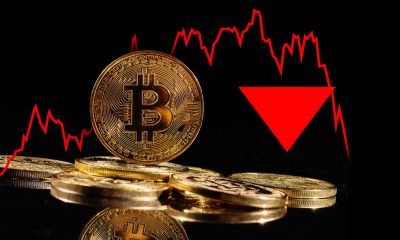
 Blockchain1 week ago
Blockchain1 week agoBitcoin on Track For 4th Annual Decline Despite Crypto Adoption – Crypto News
-

 others6 days ago
others6 days agoBillionaire Ray Dalio Says Bitcoin Has Problems, Calls Crypto Asset Inferior to Gold – Crypto News
-

 Cryptocurrency1 week ago
Cryptocurrency1 week agoWhy quantum computing is becoming a real concern for Bitcoin – Crypto News
-
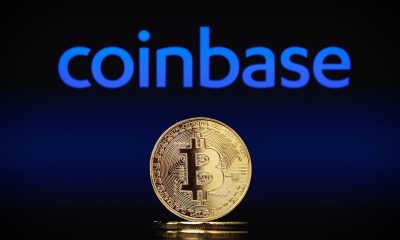
 Blockchain1 week ago
Blockchain1 week agoCoinbase Launches Service to Help Businesses Create Tokens – Crypto News
-
Business1 week ago
Bitcoin Price Alarming Pattern Points to a Dip to $80k as $2.7b Options Expires Today – Crypto News
-

 Metaverse1 week ago
Metaverse1 week agoAI Tool of the Week: Transform marketing concepts instantly. – Crypto News
-
Technology1 week ago
Michael Saylor Sparks Debate Over Bitcoin’s Quantum Risk as Bitcoiners Dismiss It as ‘FUD’ – Crypto News
-

 Blockchain7 days ago
Blockchain7 days agoLitecoin Follows Bitcoin’s Momentum, But Resistance Looms At $79.60 – Crypto News
-

 Technology6 days ago
Technology6 days agoSam Altman teases ChatGPT Christmas Easter egg that turns your selfie into a Santa message: How it works – Crypto News
-
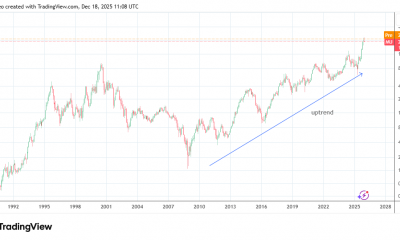
 Cryptocurrency6 days ago
Cryptocurrency6 days agoKey Drivers & Technical Outlook – Crypto News
-
Business1 week ago
Breaking: VanEck Discloses Fees and Staking Details for its Avalanche ETF – Crypto News
-

 Cryptocurrency1 week ago
Cryptocurrency1 week agoBTC at $143K, ETH above $4000: Citi issues bullish price forecasts as crypto market continues to struggle – Crypto News
-
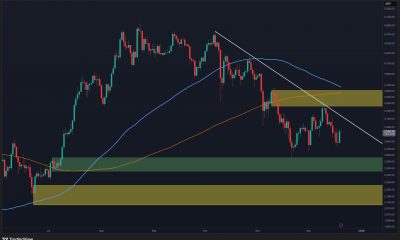
 Cryptocurrency1 week ago
Cryptocurrency1 week agoIs ETH Ready for Sustained Recovery or Another Rejection Looms? – Crypto News
-

 Cryptocurrency1 week ago
Cryptocurrency1 week agoCrypto Industry Must Make Progress Before Trump Leaves Office: Etherealize Co-Founder – Crypto News
-

 Cryptocurrency1 week ago
Cryptocurrency1 week agoCrypto Industry Must Make Progress Before Trump Leaves Office: Etherealize Co-Founder – Crypto News
-
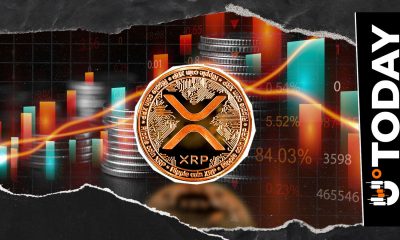
 Cryptocurrency1 week ago
Cryptocurrency1 week agoXRP Could Add Zero If Rally Is Short-Lived – Crypto News
-

 Cryptocurrency6 days ago
Cryptocurrency6 days agoCrypto Game Crashouts: The Biggest Shutdowns in 2025 – Crypto News
-
Technology6 days ago
Canary Capital Announces Major Changes to Its SUI ETF – Crypto News
-

 Cryptocurrency5 days ago
Cryptocurrency5 days agoIMF advances talks with El Salvador on Bitcoin policy and Chivo wallet future – Crypto News
-

 Cryptocurrency5 days ago
Cryptocurrency5 days agoIMF advances talks with El Salvador on Bitcoin policy and Chivo wallet future – Crypto News
-

 Blockchain1 week ago
Blockchain1 week agoCiti Pulls Blockchain Into the Banking Core – Crypto News
-

 Blockchain1 week ago
Blockchain1 week agoMastercard, BlackRock Join Middle East-Focused Blockchain Effort – Crypto News
-

 Technology1 week ago
Technology1 week agoFrom chibi to plushie: 7 Must-try AI portraits you can create with GPT Image 1.5 – Crypto News
-

 Technology1 week ago
Technology1 week agoFrom chibi to plushie: 7 Must-try AI portraits you can create with GPT Image 1.5 – Crypto News
-

 Cryptocurrency1 week ago
Cryptocurrency1 week agoBitMine Tops Up Treasury With $300 Million in Ethereum – Crypto News
-
others1 week ago
Trump to Interview BlackRock’s Rick Rieder as Fed Chair Shortlist Narrows to Four – Crypto News
-
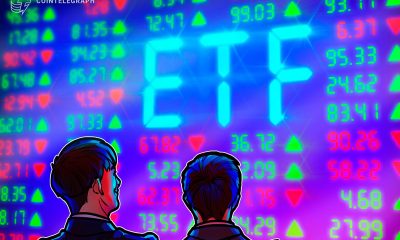
 Blockchain1 week ago
Blockchain1 week agoBlackRock’s IBIT Ranks 6th in ETF Flows Despite Negative Returns – Crypto News
-

 others1 week ago
others1 week agoElliott Wave, seasonality, and cycles indicate more upside – Crypto News
-

 others1 week ago
others1 week agoElliott Wave, seasonality, and cycles indicate more upside – Crypto News
-

 Blockchain1 week ago
Blockchain1 week agoWhy XRP Price Is Playing Catch-Up Despite Successful ETF Launch: Analyst – Crypto News
-

 Blockchain1 week ago
Blockchain1 week agoBlockchain and AI Vibe-Coding To Dethrone Amazon Web Servies: Crypto exec – Crypto News
-

 Blockchain1 week ago
Blockchain1 week agoBanks Need XRP To Be Pricier—Here’s Why A Finance Expert Says So – Crypto News
-
Business1 week ago
Breaking: Rep. Max Miller Unveils Crypto Tax Bill, Includes De Minimis Rules for Stablecoins – Crypto News
-
others1 week ago
Australia CFTC AUD NC Net Positions down to $-629K from previous $-84.2K – Crypto News
-
Technology1 week ago
UK Crypto Market Entering a Phase of Maturity, Says Bybit Policy Director – Crypto News












